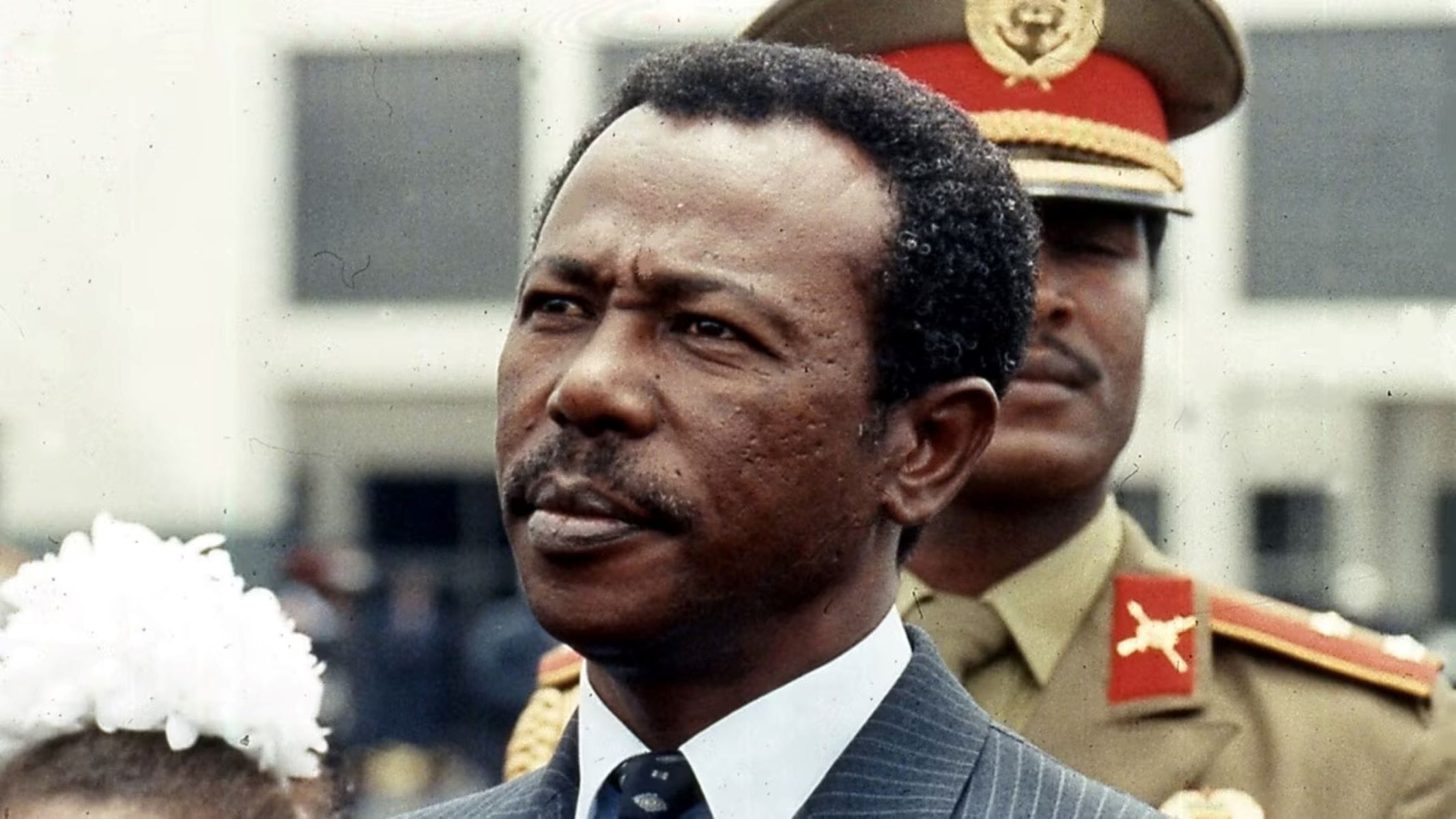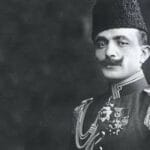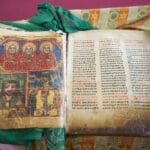Get ready to meet one of Ethiopia’s most talked-about leaders, Mengistu Haile Mariam, a.k.a. the “Lion of Ethiopia.” He’s a mix of enigma and controversy. Mengistu rose to power after the dramatic fall of Emperor Haile Selassie. His rule, marked by the “Red Terror,” was a bloody chapter in Ethiopia’s history. But beyond the dark stuff, there’s more to his story. How did this communist dictator leave such a lasting impact? Who was Ethiopia’s best leader? How many presidents has it had? Let’s dig into the fascinating world of Mengistu and uncover the surprising facts that shape his legacy.
Astounding Facts About Mengistu Haile Mariam
Mengistu Haile Mariam’s rule over Ethiopia, from 1974 to 1991, was marked by both dramatic changes and brutal repression, leaving a complex and controversial legacy. Here’s a glimpse into some of the most striking aspects of his time in power:
1. The Red Terror’s Devastating Impact: Imagine a period so terrifying it’s simply known as the “Red Terror.” From 1977 to 1978, under Mengistu’s orders, Ethiopia was gripped by extreme violence. Experts believe anywhere from half a million to a staggering 2 million people lost their lives. It was a time when imprisonment without trial, torture, and executions were tragically commonplace.
2. Uprooting Lives: The Impact of Villagization: In a controversial move, Mengistu’s government forced millions of Ethiopians from their homes in a policy known as “villagization.” The goal, they claimed, was to improve services and boost agricultural production. However, it ripped apart communities that had existed for generations. Critics argue that it worsened inequality across the country and contributed to the devastating famine of the 1980s.
3. The Soviet Union: A Lifeline and a Crutch: During the Cold War, Mengistu found a powerful ally in the Soviet Union. Their support, both militarily and financially, was crucial in keeping him in power for so long. However, when the Soviet Union itself collapsed in 1991, Mengistu lost a vital source of support, leaving him vulnerable to growing resistance within Ethiopia.
4. Fall From Power and Exile: In 1991, rebel forces, fueled by years of discontent, finally managed to overthrow Mengistu’s regime. He fled into exile in Zimbabwe, where he remains to this day, despite international calls for his extradition to face trial for his alleged crimes.
5. A Divided Legacy: Even today, Mengistu’s legacy remains a subject of intense debate. Some remember him as a revolutionary figure who fought for progress and stood up to Western imperialism, while others condemn him as a ruthless dictator responsible for unimaginable suffering.
6. Economic Hardship and the Great Famine: Mengistu’s attempts to reshape Ethiopia’s economy along communist lines, including the mass collectivization of farms, had disastrous consequences. The country experienced a steep economic decline, culminating in a horrific famine from 1983 to 1985 that claimed the lives of hundreds of thousands, possibly even a million, Ethiopians. This dark period continues to haunt the nation’s memory.
7. Silencing Dissent: Mengistu had no tolerance for opposition. He ruthlessly silenced any voices that dared to criticize him or his government. Political opponents were systematically eliminated, creating a climate of fear and repression. This suppression of dissent stifled debate and hindered progress in Ethiopia for years.
8. The International Stage: While the Soviet Union played a major role, other countries were also involved in the events that shaped Mengistu’s rise and fall. The motivations behind their actions and the extent of their influence are still debated by historians today. Some experts suggest that Cold War rivalries blinded Western powers to the severity of the human rights abuses occurring under Mengistu’s rule.
9. A Past That Still Resonates: The debate surrounding Mengistu’s culpability in the atrocities committed under his watch and the possibility of true reconciliation in Ethiopia are still very much alive. It’s a testament to the deep wounds left by his regime and the ongoing struggle to come to terms with this difficult period in the nation’s history.
What is Mengistu Haile Mariam known for?
Mengistu Haile Mariam, sometimes called the “Lion of Ethiopia,” is primarily known for his ruthless dictatorship and the period known as the Red Terror. He was in charge of Ethiopia from 1974 to 1991, and during that time, his regime was responsible for widespread human rights abuses, including mass killings, torture, and imprisonment without trial.
Mengistu adhered to Marxist-Leninist ideology and implemented socialist economic policies that ultimately proved disastrous for Ethiopia. His government’s actions led to a devastating famine in the mid-1980s, exacerbating the suffering of millions of people.
Throughout his rule, Mengistu received significant support from the Soviet Union, which provided military aid and economic assistance. This alliance played a crucial role in sustaining his regime but also fueled internal conflicts and regional instability.
Who succeeded Haile Selassie?
The succession following the 1974 deposition of Emperor Haile Selassie, the last emperor of Ethiopia, is complex. While Crown Prince Asfaw Wossen was the designated heir and was even briefly proclaimed emperor, he was in exile due to health issues and never effectively ruled.
In the turmoil after Haile Selassie’s removal, the Derg, a military committee, seized control. Mengistu Haile Mariam, the Derg’s leader, emerged as the de facto ruler. The Derg appointed Tafari Benti as interim head of state, but he was tragically executed in 1975, solidifying Mengistu’s hold on power.
Therefore, while both Asfaw Wossen and Tafari Benti technically succeeded Haile Selassie for brief periods, it was Mengistu Haile Mariam who ultimately seized control and ruled Ethiopia for the next 17 years. His rule, marked by the Red Terror, was a dark chapter in Ethiopian history, characterized by mass killings, oppression, and human rights violations.
How Many Presidents Are in Ethiopia?
Since becoming a republic in 1987, Ethiopia has had six presidents. However, it’s important to note that Ethiopia’s president holds a largely ceremonial role, serving as head of state but wielding limited executive power. The true head of government is the Prime Minister.
Here’s a quick rundown of Ethiopia’s presidents:
- Mengistu Haile Mariam (1987-1991): The first president, he transitioned from leading the Derg military junta to the presidency when Ethiopia became a republic. His presidency continued to be marked by conflict and economic hardship.
- Meles Zenawi (interim, 1991-1995): Zenawi became interim president following the overthrow of Mengistu’s regime. He later served as Prime Minister, playing a significant role in shaping modern Ethiopia.
- Negasso Gidada (1995-2001)
- Girma Wolde-Giorgis (2001-2013)
- Mulatu Teshome (2013-2018)
- Sahle-Work Zewde (2018-present): Zewde made history as Ethiopia’s first female president. Her appointment was celebrated as a significant step towards gender equality in Ethiopian politics.
Who was the greatest leader of Ethiopia?
Choosing the “greatest” leader of any nation is subjective and depends on the criteria used. However, some of the most commonly cited contenders for Ethiopia include:
- Emperor Menelik II (reigned 1889-1913): Credited with modernizing Ethiopia and repelling Italian colonialism at the Battle of Adwa in 1896.
- Emperor Haile Selassie I (reigned 1930-1974): A complex and controversial figure, he led Ethiopia through modernization efforts, Italian occupation, and World War II. He is revered by Rastafarians as a divine figure.
- Meles Zenawi (Prime Minister, 1995-2012): A key figure in the Ethiopian People’s Revolutionary Democratic Front (EPRDF) that overthrew Mengistu, Zenawi oversaw significant economic growth but faced criticism for human rights abuses.
It’s important to consider historical context and acknowledge that even the most celebrated leaders often have flaws and make contentious decisions.
What does the name Hailemariam mean?
The name “Hailemariam,” common in Ethiopia, carries a deep meaning rooted in the Amharic language and Christian faith.
- Haile: Translates to “power” or “strength” in Amharic.
- Mariam: Refers to Mary, specifically the Virgin Mary, a central figure in Christianity.
Therefore, “Hailemariam” can be interpreted as “power of Mary” or “strength of Mary.” It is a popular name choice for families with strong Christian beliefs in Ethiopia, representing both cultural identity and religious devotion.
Who was the communist dictator of Ethiopia?
Mengistu Haile Mariam, who ruled Ethiopia from 1977 to 1991, was the communist dictator of Ethiopia. He led the Derg, a military committee that seized power in 1974. Mengistu’s regime, characterized by its brutality and suppression of dissent, implemented Marxist-Leninist policies and aligned itself with the Soviet Union during the Cold War.
His rule was marred by the Red Terror, a period of intense political repression and violence that resulted in the deaths of tens of thousands, possibly hundreds of thousands of Ethiopians. Mengistu’s government was also responsible for severe economic mismanagement, which contributed to a catastrophic famine in the 1980s.
In 1991, Mengistu was overthrown by a coalition of rebel groups and fled to Zimbabwe, where he remains in exile. He has been convicted of genocide in absentia for his role in the Red Terror.
Who was the first king of Ethiopia?
Identifying the very first king of Ethiopia is difficult due to limited historical records and the ancient origins of Ethiopian civilization. However, there are two key figures associated with early Ethiopian monarchy:
- Menelik I: According to tradition, Menelik I founded the Solomonic dynasty in the 10th century BC. Legend claims he was the son of King Solomon and the Queen of Sheba. However, historians believe that the Solomonic dynasty likely didn’t begin until much later, possibly around the 13th century AD.
- Aksumite Kings: The Aksumite Kingdom, a powerful ancient empire centered in what is now Ethiopia and Eritrea, flourished from roughly the 2nd century AD. The Aksumite kings ruled long before the supposed reign of Menelik I, and their dynasty played a crucial role in shaping early Ethiopian culture, religion, and trade.
While the identity of the very first king remains uncertain, the Aksumite Kingdom provides evidence of sophisticated governance in Ethiopia centuries before the traditionally accepted start of the Solomonic dynasty.
Who is the head of state in Ethiopia?
In Ethiopia, the head of state is the President. Currently, Sahle-Work Zewde holds this position, making history in 2018 as the first woman to do so. However, it is crucial to understand that the Ethiopian presidency is largely ceremonial, with limited executive power.
The President’s responsibilities are primarily focused on national unity and upholding the constitution. They act as a symbolic representative of the country but do not have the authority to make major policy decisions.
The true head of government in Ethiopia is the Prime Minister, who leads the executive branch and oversees day-to-day governance. The Prime Minister is appointed from the party that holds a majority in the House of People’s Representatives, the lower house of Ethiopia’s parliament.
Who is currently in power in Ethiopia?
As of 2023, the Prime Minister of Ethiopia is Abiy Ahmed Ali. He assumed office in 2018, representing the Prosperity Party. Ahmed’s tenure has been marked by both significant reforms and ongoing challenges.
He has implemented measures aimed at promoting national unity, releasing political prisoners, and making peace with Eritrea. However, he has also faced criticism for his handling of the Tigray conflict, which erupted in 2020 and has resulted in a humanitarian crisis. The situation in Tigray remains unstable, and researchers are still trying to assess the long-term impacts on the region and Ethiopia as a whole.
Ethiopia’s political landscape continues to evolve, and only time will tell how Abiy Ahmed Ali’s premiership and the Prosperity Party’s dominance will shape the country’s future.
Have you heard of all the amazing facts about Tony Nese? To be enthralled, go here: https://www.lolaapp.com/facts-about-tony-nese. If you are more of a classic “old-school” wrestling fan, then we have some warrior-sized facts about Ultimate Warrior here: https://www.lolaapp.com/facts-about-ultimate-warrior.













1 thought on “Unmasking the Lion of Ethiopia: Astounding Facts About Mengistu Haile Mariam”
Comments are closed.